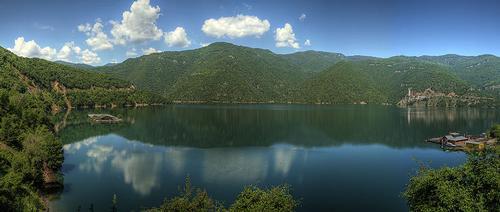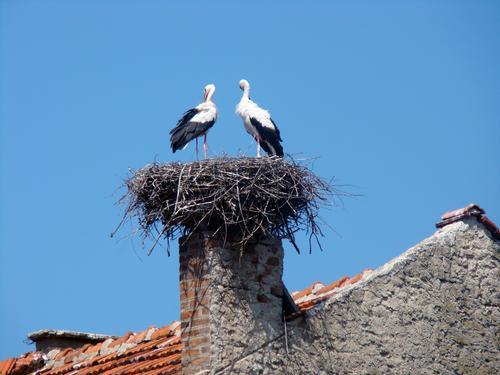BULGARIA
Plants and Animals

Plants and Animals

Cities in BULGARIA
| Sofia |
Plants and Animals
Plants
 Rodopi Mountains BulgariaPhoto: Aski CC 3.0 Unported no changes made
Rodopi Mountains BulgariaPhoto: Aski CC 3.0 Unported no changes made
Plant growth is varied due to the climate transition from continental to Mediterranean. The Danube Plain, with its fertile loess soils, is important for Bulgarian agriculture. This landscape, mainly dominated by cultivated land, also consists of grasslands and steppe vegetation. The Balkan Mountains are quite forested with mainly wild chestnuts, elms, oaks, beech and ash. The High Balkans and the Pirin Mountains have alpine vegetation.
The Thracian Plain is very green with wild apple and pear trees in the valleys. The southern mountain regions and especially the Rodopi Mountains have impressive coniferous forests. Mediterranean vegetation occurs in the Maritsa Plain and on the Black Sea coast. Total forest ownership has declined dramatically since the Middle Ages; only 30% of Bulgaria is covered with forest, including a lot of deciduous forest.
Animals
 Storks BulgariaPhoto: Edal Anton Lefterov CC 3.0 Unported no changes made
Storks BulgariaPhoto: Edal Anton Lefterov CC 3.0 Unported no changes made
The animal world belongs to that of the Mediterranean transition area, which results in a great diversity of species. Wild boars, wolves and bears live on the slopes of the forested mountains. Bulgaria has about 350 bird species of which about 160 live around Lake Srebarna, which is under UNESCO protection. Many species of birds can also be found on the many islands in the Danube, such as spoonbills, plovers, grebes and egrets.
In the countryside there are still tens of thousands of storks that travel south in August. Pelicans breed on the coast and large colonies of swallows live. Swallows are also common inland. In a number of swamps there are still quite a few freshwater turtles. The protected areas mainly include the so-called “wetlands”, which are very important for breeding and wintering birds.
Seventeen areas have been designated as protected natural areas and nature reserves. The Bajuvi Doupki-Djindjeritsa Nature Reserve, like Lake Srebarna, is under UNESCO protection.
Sources
Berg, H. van den / Reis-handboek voor Bulgarije
Elmar
Detrez, R. / Bulgarije: mensen, politiek, economie, cultuur, milieu
Koninklijk Instituut voor de Tropen
Resnick, A. / Bulgaria
Childrens Press
CIA - World Factbook
BBC - Country Profiles
Copyright: Team The World of Info